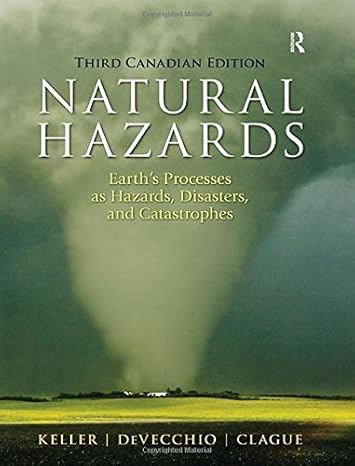What is This Product?
The Test Bank for Natural Hazards: Earth’s Processes as Hazards and Disasters, 3rd Edition (Canadian Edition) by Edward A. Keller is a vital resource for students studying earth sciences and natural hazards. This test bank provides a series of multiple-choice questions, focusing on Chapter 3: Earthquakes, designed to reinforce key concepts about earthquakes and their effects.
Key Misconceptions:
- Earthquakes are rare events.
- The ground cracks open to swallow people and buildings.
- Seismic waves involve long-distance motion of particles.
- S-waves do not travel across the Earth’s oceans.
- Earthquakes result from the collapse of subterranean hollow spaces.
Sample Questions Include:
- Question 1: Which of the following is incorrect regarding earthquake magnitudes?
A) Earthquake magnitudes are measured using powers of ten.
B) An earthquake with a magnitude of 3 is only slightly stronger than one with a magnitude of 2.
C) Major earthquakes can reach a magnitude of 8 or highe.
D) Over a million earthquakes of magnitude 2-2.9 are felt each year.
E) The Richter and Moment Magnitude scales describe the magnitude of an earthquake.
Answer: B - Question 2: How many earthquakes occur annually?
A) About 10
B) About 100
C) About 1,000
D) About 10,000
E) About 1,000,000
Answer: E - Question 3: How do earthquake intensity and magnitude differ?
A) Only strong earthquakes have intensity.
B) Intensity refers to the effects of the earthquake, while magnitude refers to the energy released.
C) Intensity cannot be measured, but magnitude can.
D) Intensity refers to energy released, and magnitude refers to energy absorbed.
E) Only weak earthquakes have intensity.
Answer: B - Question 8: Which of the following best describes a fault?
A) Intensity refers to the size of a gap or canyon on Earth.
B) A location where caves or large holes are hidden underground.
C) A place where continents meet the ocean.
D) Intensity refers to a chasm that is often filled with magma.
E) A place where there is a break, and both parts are sliding against each other.
Answer: E - Question 10: Earthquakes occur ________
A) only on Convergent Plate Boundaries.
B) only on Divergent Plate Boundaries.
C) only on Transform Fault Boundaries.
D) only on certain plate boundaries.
E) Earthquakes occur on all plate boundaries and within the plates themselves.
Answer: E
Key Features:
- Focuses on earthquake-related questions in Chapter 3 of the textbook.
- Includes multiple-choice questions covering key earthquake concepts.
- Instant download, no waiting time.
- Designed for students studying earth sciences, natural hazards, and disaster management.
This test bank is an excellent tool for reinforcing your understanding of earthquakes and their impact on Earth’s geological processes. Prepare for exams and deepen your knowledge with this comprehensive resource.












Reviews
There are no reviews yet.